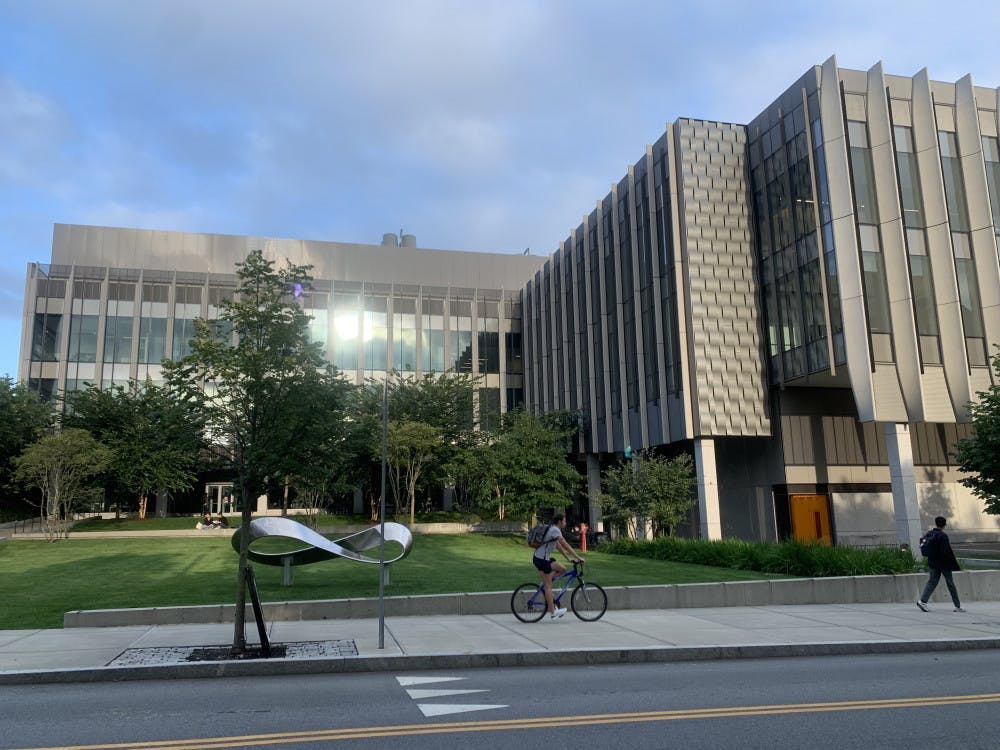The School of Engineering was re-accredited by the Accreditation Board for Engineering and Technology at the end of September, validating and enabling the continual growth of the engineering program at Brown. Engineering schools are accredited every six years, and this most recent re-accreditation approval comes at the end of a two-year-long review and visit process by ABET, the accreditation organization for North America and Europe.
The external advisory committee from ABET is composed of professors and engineering professionals. While ABET itself places an emphasis on technical and scientific skills, it also focuses on teamwork and personal skills.
“It’s important for Brown because it’s a stamp of quality for our program,” said Lawrence Larson, the dean of the School of Engineering. “It’s a stamp that we are updating the program in an appropriate way based on new developments in science and technology.” He adds that it is also a signal to potential employers that Brown’s School of Engineering students have had the most up-to-date and rigorous engineering education.
Nearly every engineering program in the world is accredited with an engineering-specific accreditation, said Jennifer Casasanto, associate dean for programs and planning.
“I think that the idea of accreditation, similar to the way that medical schools are accredited, helps us to agree on the standards of what it takes to be a professional engineer,” Casasanto said. Some criteria for accreditation are ethics, safety and impact on society.
At Brown, there are seven dif -ferent engineering concentrations, Casasanto said, six of which were previously ABET accredited. This year, the environmental engineering program joined the list, accrediting all seven concentrations.
“This was about the best outcome possible,” said Professor of Engineering Rod Beresford.
The environmental engineering program at Brown was accredited for the first time despite being at Brown since the 2013-14 academic year. A program requires four or more years of graduates — whom ABET interviews after they leave the program — in order for the school to apply for accreditation. Not only did the environmental engineering program gain accreditation, but ABET also gave Brown retroactive accreditation. This ensures that the program is recorded as having been accredited since 2018.
Kurt Pennell, professor of engineering, teaches and conducts research in the environmental engineering program, and has worked with this program through the accreditation process.
“The accreditation process allows you to become a professional engineer,” Pennell said, by granting professional licenses to students in an accredited program upon graduation. A professional license is especially important for environmental engineers, he said, since they take on many responsibilities and require authority to handle paperwork.
“In environmental (engineering), a lot of times you are working with another company or you are working with a public entity, like (the Environmental Protection Agency) or Department of Environmental Management, and they want someone who is (licensed) by a professional organization,” Pennell said.
Rachelle Shao ’22, who concentrates in environmental engineering, said that for concentrators, the impacts of accreditation are tangible. Even though environmental engineering is a relatively new concentration at Brown, she said, accreditation provides an assurance of future job security for individuals in the concentration.
She also believes that the accreditation process helps programs critically reflect on their curricula and tailor classes in the concentration to the requirements of the workforce. For example, in the environmental engineering program, ENGN 0510: “Electricity and Magnetism” was made optional while computer science classes were included as core classes. Shao says that these changes to the program can help better prepare environmental engineering students for their specific professional field.
Alex Zaslavsky, professor of engineering and physics, was the lead faculty member for this accreditation review. The University’s accreditation is particularly impressive and unusual because, despite the School of Engineering’s small faculty size, it has seven accredited programs, he said. There are currently 56 full-time and tenure-track faculty members in the school.
“By having the engineering core (requirements), where many students take courses in varied disciplines, we are able to maintain the necessary breadth and depth of the program, even though the number of faculty is small,” Zaslavsky said.
Zaslavsky and Larson also said that some employers look favorably on accreditation because students from accredited programs can become licensed engineers in a short period of time.
“When you get a degree in engineering, you want to have assurance that when you leave this university, that you can go to any company and to be able to hit the ground running and be a high-level scientific and technical contributor,” Larson said.
As part of the accreditation process, Brown’s School of Engineering shared its course bulletins and past student work with ABET. Before ABET examiners visited Brown, faculty wrote self studies describing each of the degree programs, and examiners sent back questions. Faculty then students shared students’ reports and projects with ABET, with their permission. Students from every engineering concentration also met with ABET directly to discuss their experiences at Brown.
The criteria for accreditation focuses on rigor of coursework, faculty involvement, student learning and the quality of facilities, among other aspects of the engineering education. The ABET criteria, while comprehensive, does change over time based on feedback from schools. Casasanto mentions that Brown students have communicated with ABET in the past to make ethics more prominent in ABET criteria.
“Engineering ... is a very dynamic field,” Casasanto said. “Because engineering is not static, accreditation has to also engage with all these engineering programs to continually improve.”





